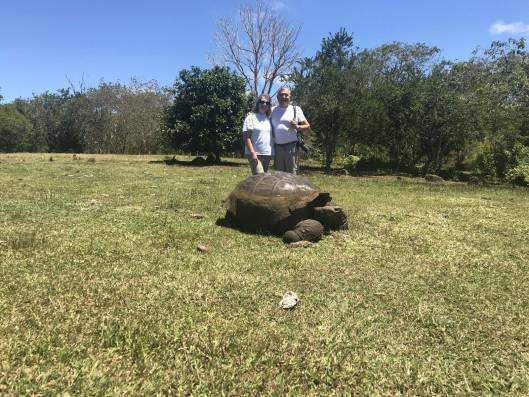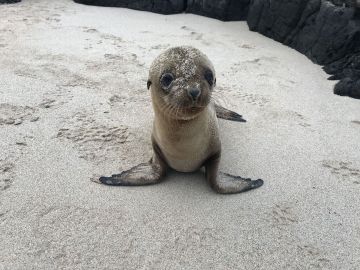
7 Great Reasons To Visit The Galapagos Islands
Visiting the Galapagos Islands is unlike any other travel experience on the planet. Even if you have no interest in Charles Darwin, evolutionary science, or history, every day you spend exploring the Galapagos brings a bevy of adventure.
Located 563 miles west of Ecuador, this remote archipelago of volcanic islands is a mecca for people who love nature and wildlife. It is not just about the incredible biodiversity or the sheer numbers of animals you’ll likely see. But this is one of the few places in the world where most of the animals are completely unafraid of humans.
I’ve been to the Galapagos twice now–once with my wife and once with my teenage daughter–and it’s one of the few places I’d gladly return to over and over again if the opportunity presented itself. Here’s my personal take on seven reasons why EVERYONE should visit the Galapagos Islands at least once in their lifetime.
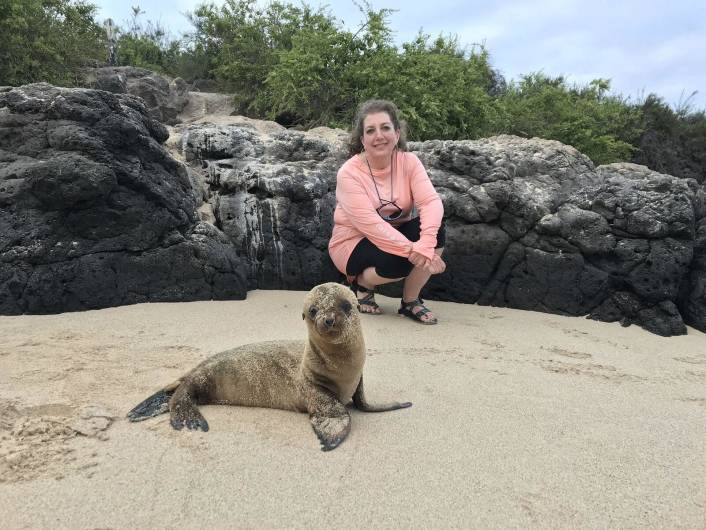
1. Take One of the World’s Best Small Ship Cruises
The Galapagos Islands is consistently ranked among the best small ship cruise destinations in the world. Taking a small ship cruise is truly vital if you want to visit most of the archipelago’s 18 major islands, which are spread across 3,040 square miles of ocean.
Overland tours have become increasingly popular on some of the more heavily populated islands in recent years, leading to overtourism-related issues. Santa Cruz (where the Charles Darwin Research Station is located), San Cristóbal and Baltra (which are home to the islands’ two major airports) are all bustling with activity.
But the area’s most wildlife-rich islands–including Española, Fernandina, Floreana and Isabela–are relatively remote. Most of them have little to no accommodation, and the best spots for hiking are accessible only by boat. So taking a small-ship cruise really is the only way to explore the Galapagos Islands in depth.
2. Walk in Darwin’s Footsteps
Although the Galapagos Islands were discovered (by accident) in 1525, they were made famous by the famed voyage of The Beagle, which was chronicled in Charles Darwin’s book of the same name.
It was during his extraordinary adventures in the Galapagos when he noticed the genetic adaptations similar species had made to the various ecosystems they inhabited, that Darwin conceited his theory of evolution.
When you visit the Galapagos Islands today, you can witness these genetic adaptations for yourself. The world-famous Galapagos tortoises look unique from island to island, with differently shaped shells, different neck lengths, and other adaptations that make it easier for them to feed on local vegetation.
Similarly, the 14 species of birds known as Darwin’s finches each species has a distinctive beak size and shape and specialized feeding behavior. Collectively, they fill the roles of some seven different families of birds that are found on mainland South America.
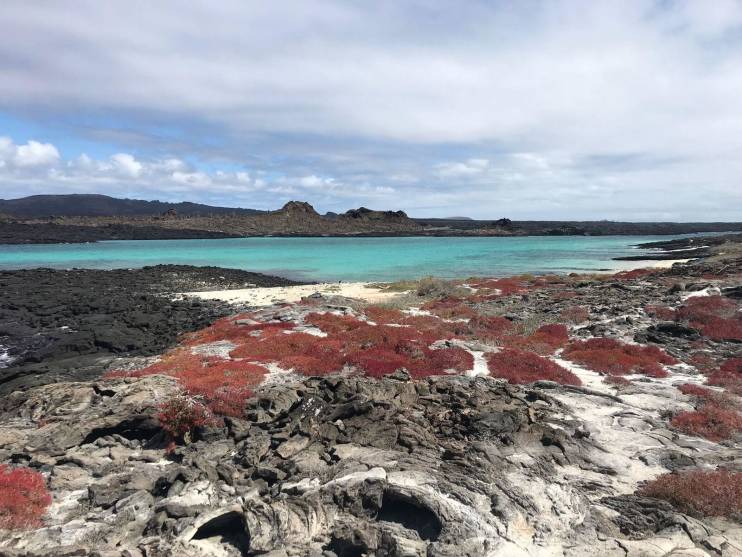
3. Explore Unspoiled Ecosystems
Though the Galapagos Islands were popular among pirates (who hid there after attacking Spanish galleons, plundering the tortoise population for meat) and whalers during the 17th and 18th centuries, most efforts to colonize the archipelago failed miserably. Many Ecuadorian mainlanders considered the islands cursed.
So most of the islands remain uninhabited today, and there are laws and tourism restrictions in place that were designed to protect the biodiversity of these pristine ecosystems. UNESCO named the Galapagos first protected World Heritage Site in 1978, and 97.5% of the archipelago is set aside as a strictly regulated national park.
What this means for travelers is a relatively unspoiled experience very similar to what Charles Darwin may have seen during his first visit to the Galapagos Islands nearly 200 years ago. There are dense forests, volcanic lava tubes, picturesque beaches packed with Galapagos sea lions, trails lined with blue-footed booby and magnificent frigatebird nests, and much more to explore.
4. Take in Stunning Scenic Views
From the beautiful beach in Gardner Bay (on Española Island) to the stunning sunsets at Kicker Rock (near San Cristobal), the Galapagos has no shortage of iconic images. But arguably the most Instagram-worthy of them all is the panoramic view found on Bartolomé, an islet off the east coast of Santiago Island.
Like Santiago’s Sullivan Bay, the islet is named after Darwin’s friend Sir Bartholomew James Sullivan, who served as a lieutenant aboard the HMS Beagle. One of the younger islands in the Galapagos, it is also among the smallest, with just .5 square miles of land.
Still, it is a popular stop because of the scenery you can soak in from the top of the volcanic cone that dominates the island. It’s dominated by volcanic rock in a broad variety of shapes and colors, from red, orange, and green to dramatic black. The most commonly photographed is Pinnacle Rock, one of the signature landmarks of the archipelago.
The only downside is the crowds that occasionally bottleneck on the narrow staircase leading up to the viewpoint. But your patience will be rewarded with incredible landscapes and thrilling sightings of boobies dive-bombing into the sea for fish.
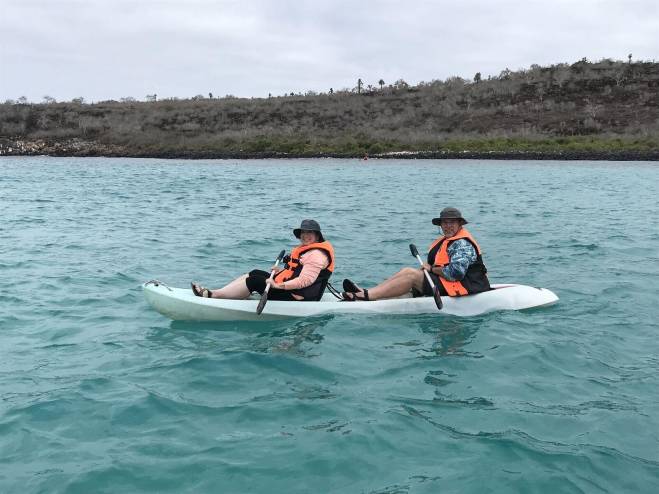
5. Watch For Weird Wildlife
Bartolomé is also a great place to see some of the weird animals that call the Galapagos Islands home. Galapagos penguins are frequently seen in the area around Pinnacle Rock, and sea turtles often lay eggs on its shores during nesting season.
But these are just a few of the dozens of distinctive Galapagos Islands animals you’ll see during a small-ship cruise of the archipelago.
Marine iguanas can be seen on virtually every shore, clustering en masse for warmth and entering into the sea to feed on algae. Vividly colored land iguanas range from the common yellow-orange variety to the critically endangered (and only recently discovered) pink and black variety. Snakes (none of which are poisonous) are not an uncommon sight.
Birdwatchers will have a field day spotting new species. In addition to the aforementioned 14 species of Darwin’s finches, there are also three kinds of boobies, flamingos, hawks, flightless cormorants, lava gulls, flycatchers, mockingbirds, owls, doves, gulls, herons and much more.
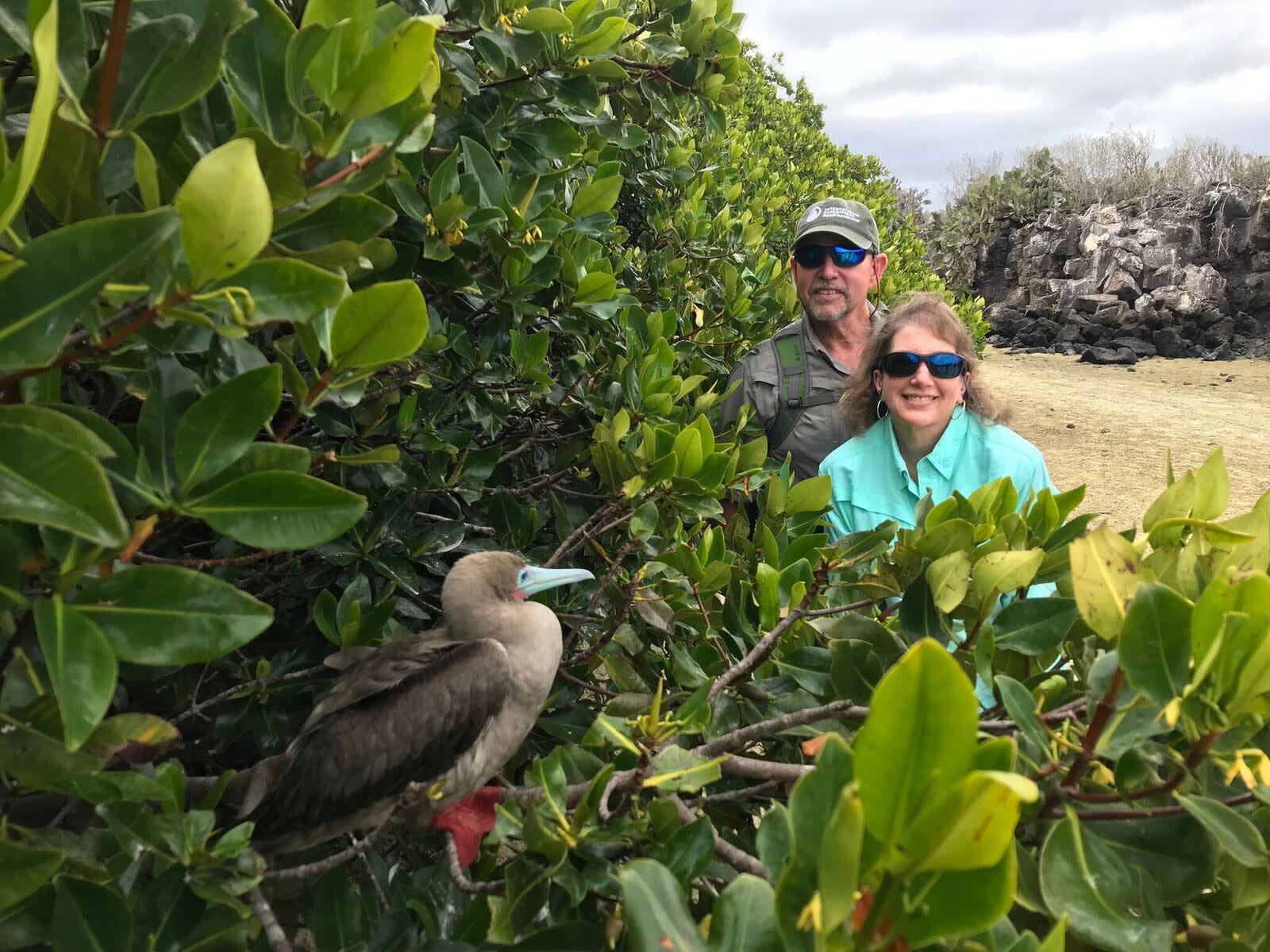
6. Swim With Galapagos Sea Lions
One of our favorite species of Galapagos wildlife is also it’s most common. You’ll see Galapagos sea lions virtually everywhere–in the towns, on the docks, sunning themselves on beaches, awkwardly scuttling up the rocks.
They may seem clumsy on land, but in the water, they’re graceful and athletic, at times looking like aquatic ballet dancers. They’re also very curious and eager to engage, as I learned while snorkeling off the coast of Santiago Island.
I was swimming along, filming a young sea lion. I twisted and turned my body to keep him in the frame, which he seemed to take as an invitation to play. He began swimming faster and faster, zipping and darting all around me, coming closer and closer in the process.
It was an exhilarating experience that seemed unique and exclusive at the time, but it happened on multiple occasions during my subsequent snorkeling sessions in the Galapagos.
7. Snorkel the Protected Marine Reserve
As incredible as the Galapagos’ land-based animals are, they can’t hold a candle to the remarkable biodiversity waiting to be discovered under the sea. Snorkeling in the Galapagos Islands is a great way to see it all for yourself.
The archipelago’s prime location on the Equator offers nutrient-rich waters, which are churned up by the warm California current from the north and the cooling Peru (or Humboldt) current from the south. This collision brings nutrients that stimulate the growth of phytoplankton, the base of the entire ocean’s food chain.
Where phytoplankton flourishes, so too do the marine life. And since many of the Galapagos’ volcanic islands are arid and lacking in proper food sources, lots of unusual animals (including flightless cormorants and marine iguanas) have adapted to find food in its waters.
Joining them are a dazzling array of rays, sharks, sea turtles and countless colorful tropical fish. If you’re lucky, you might just find yourself swimming alongside a curious Galapagos penguin, which remains one of my favorite wildlife encounters ever!
